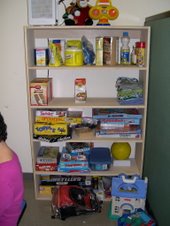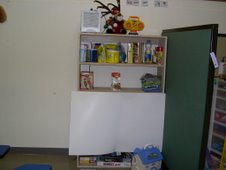
Mrs. Riley's Page Builder is an interactive website that is designed to make the task of creating picture cards and icons easier. According to its creators,developer Ben Throop and Autism Specialist Kristin McCole, it was, "created so professionals, teachers, and parents could collaboratively make educational materials, starting with picture cards." The duo, with a team of collaborators, set out to make a web-based program that was easier,faster and less expensive than some of the other applications used for this purpose.
As users create cards and "decks" of cards, they are either saved for personal use only or to share. The database will grow as it is utilized. Users may flag images that they deem inappropriate.
I played with the site for a while and that it was, as promised,easy to use. The searchable database already has many photographs and drawings on various topics, including morning routines, hygiene, behavior and vocabulary cards. Simply grab a template for from for to twenty cards per page and then search, drag, drop icons. Click on the tab for "decks" and drag whole sets of cards into the template at one time. Double-clicking on a card allows the user to edit the label and other features of the card.
Current weaknesses: Many of the drawings are whimsical, but are clear and easy to comprehend. I found more drawings of female subjects than male subjects, and fewer icons that looked like young children than icons depicting older individuals. I found it difficult to drop two decks of cards onto a single page,as there was no way to control which boxes the pictures fill. Some cards from the first deck, for example, were overwritten when the second deck was dropped onto the template.
For now, the public beta version of Page Builder is free. Simply register and get started immediately. Following the beta testing period, the authors promise that membership will be "very affordable." If you try it, be sure to take the pricing survey by clicking on the tag on the home page.
All in all, this looks like a promising site for easy card and icon creation. It is easier to use than Boardmaker and much easier to customize and import special images.It should be particularly helpful to the classroom teacher, daycare provider and parents, who may not have access to programs such as Boardmaker.


